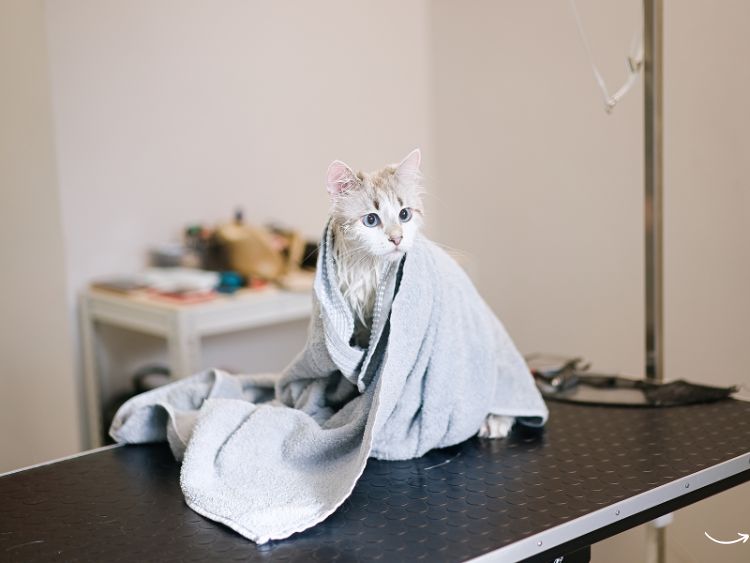Ever wondered what makes a pet look pristine and well-groomed? The secret lies in the magic of pet grooming tools! Whether you’re a seasoned pet owner or a newbie, understanding the right grooming tools for your furry friend can make a world of difference. In this comprehensive guide, we’ll dive into the essentials of pet grooming tools, why they matter, and how to use them effectively. Let’s embark on this grooming journey together!
Why Pet Grooming Tools Are Essential
Grooming your pet isn’t just about keeping them looking good; it’s crucial for their health and well-being. Proper grooming can help you detect early signs of health issues, prevent infections, and ensure your pet is comfortable and happy. Let’s delve into the myriad benefits of regular grooming.
Health Benefits
- Skin and Coat Health: Regular brushing helps remove dead hair, dirt, and dandruff, promoting a healthy coat and skin.
- Early Detection: Grooming allows you to check for lumps, bumps, and skin issues, ensuring any health concerns are addressed promptly.
- Prevention of Infections: Cleaning ears, trimming nails, and dental care can prevent infections and other health problems.
Emotional and Behavioral Benefits
- Bonding Time: Grooming sessions are an excellent opportunity to bond with your pet, fostering trust and affection.
- Reduced Anxiety: A well-groomed pet is often a more relaxed and happy pet, reducing anxiety and stress.
Must-Have Pet Grooming Tools
Equipping yourself with the right tools is the first step toward effective pet grooming. Here’s a rundown of the essential grooming tools every pet owner should have.
Brushes and Combs
- Slicker Brush: Ideal for removing mats and tangles, especially for long-haired breeds.
- Bristle Brush: Perfect for short-haired pets, this brush helps remove loose hair and dirt.
- Deshedding Tool: Reduces shedding by removing the undercoat without damaging the topcoat.
- Flea Comb: A fine-toothed comb to detect and remove fleas and their eggs.
Nail Care Tools
- Nail Clippers: Ensure you choose clippers suitable for your pet’s size and nail thickness.
- Nail Grinder: A safer alternative to clippers, grinders smoothen the nails and prevent splitting.
- Styptic Powder: Handy for stopping any bleeding that might occur if you trim too close to the quick.
Bathing Supplies
- Shampoo and Conditioner: Choose a gentle, pet-specific shampoo and conditioner suitable for your pet’s coat type.
- Pet Bathing Brush: Helps lather shampoo and remove loose fur during baths.
- Drying Towel or Pet Dryer: Essential for drying your pet quickly and efficiently after a bath.
Ear and Dental Care
- Ear Cleaner: Use a vet-approved ear cleaner to keep your pet’s ears free from wax and infections.
- Toothbrush and Toothpaste: Regular dental care prevents bad breath and dental diseases.
How to Use Pet Grooming Tools Effectively
Having the right tools is half the battle; knowing how to use them effectively is key to successful grooming. Here are some tips to ensure you’re making the most of your grooming sessions.
Brushing and Combing
- Be Gentle: Start with gentle strokes to avoid pulling and causing discomfort.
- Regular Sessions: Aim for daily brushing sessions, especially for breeds prone to matting.
- Follow the Coat Direction: Always brush in the direction of the hair growth to avoid irritation.
Nail Trimming
- Calm Environment: Ensure your pet is calm and relaxed before starting the nail trimming.
- Small Snips: Trim a little at a time to avoid cutting the quick.
- Reward System: Reward your pet after each successful nail trimming session to make it a positive experience.
Bathing
- Lukewarm Water: Use lukewarm water to avoid shocking your pet.
- Thorough Rinse: Ensure all shampoo is rinsed out to prevent skin irritation.
- Drying: Dry your pet thoroughly to prevent them from catching a cold.
Ear and Dental Care
- Gentle Cleaning: Use a cotton ball or pad with ear cleaner to gently clean the ears.
- Regular Brushing: Brush your pet’s teeth regularly to maintain oral health and prevent plaque buildup.
FAQs about Pet Grooming Tools
Q: How often should I groom my pet? A: The frequency of grooming depends on your pet’s breed, coat type, and lifestyle. Generally, brushing should be done daily for long-haired breeds and weekly for short-haired breeds. Baths can be given monthly or as needed.
Q: Can I use human grooming tools on my pet? A: It’s best to use pet-specific tools as they are designed to meet the unique needs of pets and ensure their safety.
Q: How can I make grooming a positive experience for my pet? A: Start grooming sessions slowly, reward your pet with treats and praise, and ensure a calm and comfortable environment.
Q: What should I do if my pet has a mat that’s too difficult to remove? A: If you encounter a stubborn mat, it’s best to seek the help of a professional groomer to avoid causing your pet pain or injury.
Q: Are there any grooming tools specifically for sensitive pets? A: Yes, there are grooming tools designed for sensitive pets, such as softer brushes and hypoallergenic shampoos.
Conclusion
Grooming your pet is more than just a beauty routine; it’s an essential part of their overall health and well-being. With the right pet grooming tools and techniques, you can keep your furry friend looking and feeling their best. Remember, a well-groomed pet is a happy pet!
